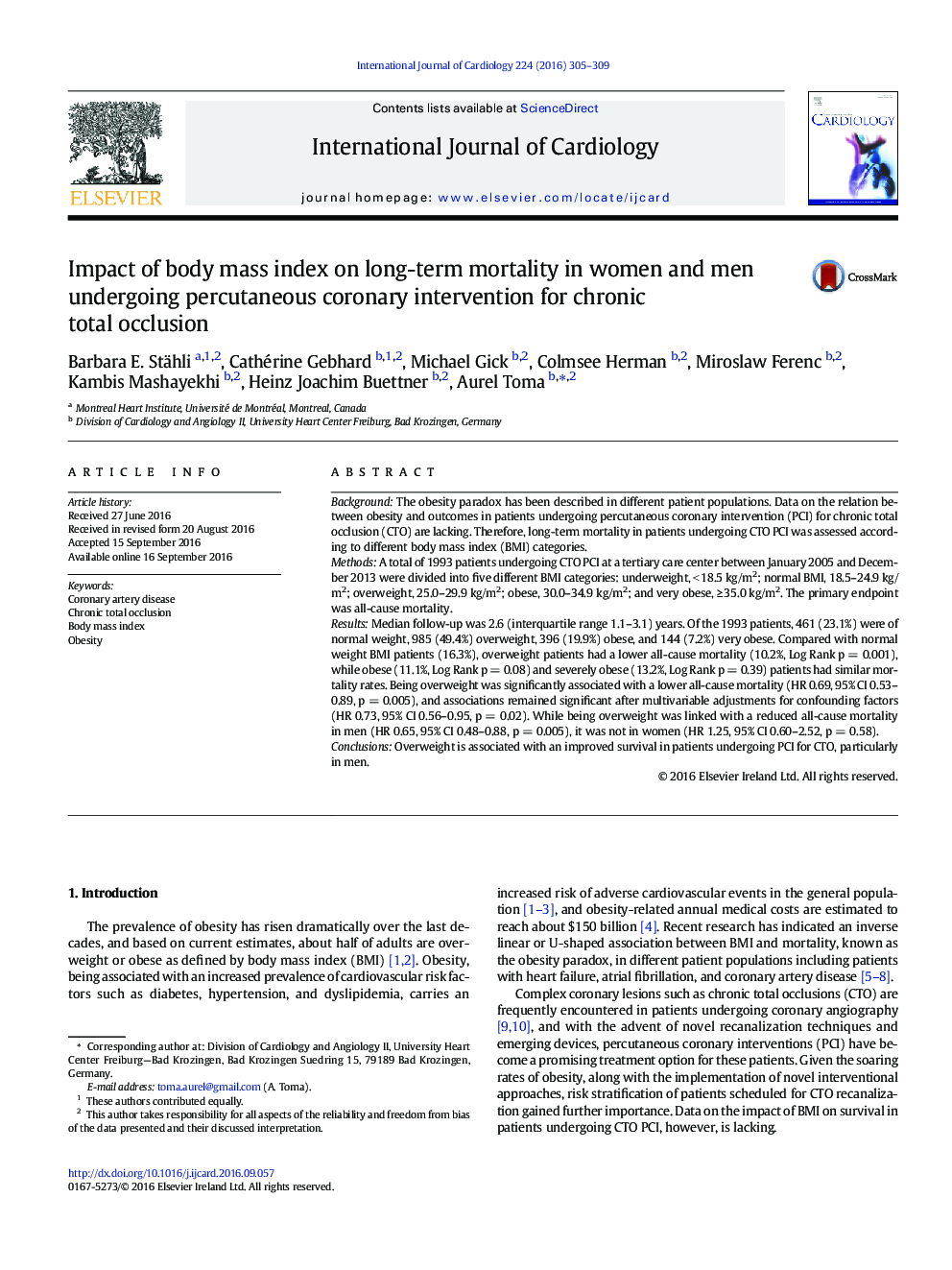| Article ID | Journal | Published Year | Pages | File Type |
|---|---|---|---|---|
| 5962419 | International Journal of Cardiology | 2016 | 5 Pages |
BackgroundThe obesity paradox has been described in different patient populations. Data on the relation between obesity and outcomes in patients undergoing percutaneous coronary intervention (PCI) for chronic total occlusion (CTO) are lacking. Therefore, long-term mortality in patients undergoing CTO PCI was assessed according to different body mass index (BMI) categories.MethodsA total of 1993 patients undergoing CTO PCI at a tertiary care center between January 2005 and December 2013 were divided into five different BMI categories: underweight, < 18.5 kg/m2; normal BMI, 18.5-24.9 kg/m2; overweight, 25.0-29.9 kg/m2; obese, 30.0-34.9 kg/m2; and very obese, â¥Â 35.0 kg/m2. The primary endpoint was all-cause mortality.ResultsMedian follow-up was 2.6 (interquartile range 1.1-3.1) years. Of the 1993 patients, 461 (23.1%) were of normal weight, 985 (49.4%) overweight, 396 (19.9%) obese, and 144 (7.2%) very obese. Compared with normal weight BMI patients (16.3%), overweight patients had a lower all-cause mortality (10.2%, Log Rank p = 0.001), while obese (11.1%, Log Rank p = 0.08) and severely obese (13.2%, Log Rank p = 0.39) patients had similar mortality rates. Being overweight was significantly associated with a lower all-cause mortality (HR 0.69, 95% CI 0.53-0.89, p = 0.005), and associations remained significant after multivariable adjustments for confounding factors (HR 0.73, 95% CI 0.56-0.95, p = 0.02). While being overweight was linked with a reduced all-cause mortality in men (HR 0.65, 95% CI 0.48-0.88, p = 0.005), it was not in women (HR 1.25, 95% CI 0.60-2.52, p = 0.58).ConclusionsOverweight is associated with an improved survival in patients undergoing PCI for CTO, particularly in men.
